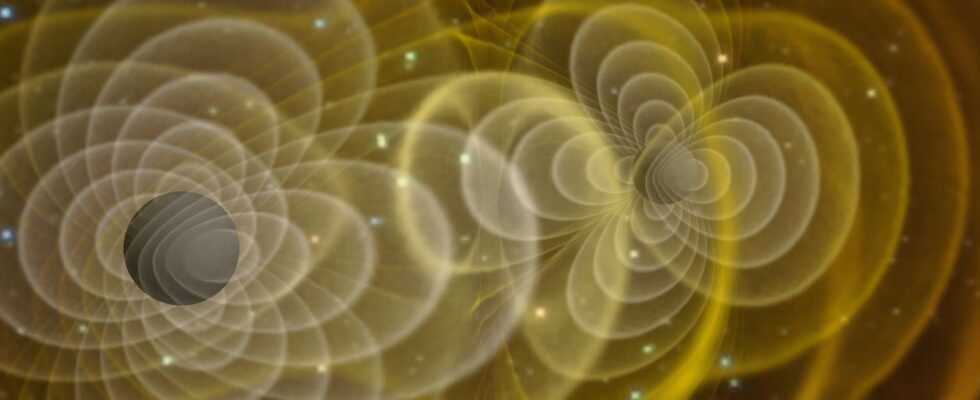In principle, such pulsars not only send radio radiation into space, but they cover the entire electromagnetic spectrum.
Gravitational wave hunting now with gamma rays
High-energy gamma rays have an unbeatable advantage over radio waves: they are not impressed by the interstellar medium. In this respect, gamma radiation even offers an advantage over the high-precision measurements in the radio range, since this source of error does not exist there. On the other hand, gamma rays cannot be observed directly on Earth, since they are absorbed by the Earth’s atmosphere – fortunately for us, one has to say.
© Daniëlle Futselaar/MPIfR (artsource.nl) (detail)
The Fermi Large Area Telescope (LAT) on the Fermi satellite | Researchers can also hunt for the low-frequency gravitational wave background in the gamma-ray range. How convenient that a gamma-ray space telescope has been in Earth orbit for several years.
Fortunately, there is a gamma-ray telescope in Earth orbit, where this radiation can easily be received: the Fermi space telescope has been observing the high-energy sky since 2008. Aditya Parthasarathy and Matthew Kerr wondered whether the gravitational-wave signal from the millisecond pulsars could in principle also be detected in the gamma-ray range. The answer: Yes, you can. As a result, twelve years of data were available to the experts in one fell swoop. The Fermi-LAT collaboration recently published the results in the journal Science.
“And the good thing is that we don’t even have to do that much because Fermi is in Earth orbit and is scanning the whole sky from there,” says Aditya Parthasarathy. “It works so well that we could even detect the low-frequency gravitational waves all by ourselves, without the PTAs in the radio wave range. It is a completely independent method.«
However, Aditya Parthasarathy still has to be patient. Although he and his team were able to show that the method works in principle, they simply haven’t collected enough data here either. And so it is also for the gravitational wave hunters in the gamma ray range: Welcome to the waiting.
As researchers wait for the first data on the gravitational-wave background, they ask themselves what they might actually be observing. What creates the gravitational wave signal? Because it’s not the hum of a single pair of merging black holes that describes the Hellings Downs curve. Instead, it is a superimposed signal from many extremely massive black holes that migrate to the new common center when two galaxies collide and orbit each other there. That is why researchers also speak of the stochastic gravitational wave background.
If black holes are too boring for you, how about cosmic strings?
However, other processes in space could also generate such low-frequency gravitational waves. The theoretical physicist Kai Schmitz deals with them. He would like to be on the lookout for signs of cosmic strings, remnants of the universe’s time just after the Big Bang. Such cosmic strings could be indicative of phase transitions our cosmos was undergoing at that time – and they would be a direct indication of physics beyond the Standard Model. Or maybe the Hellings-Downs curve even hints at the cosmic inflation shortly after the Big Bang, which made space-time itself oscillate?
